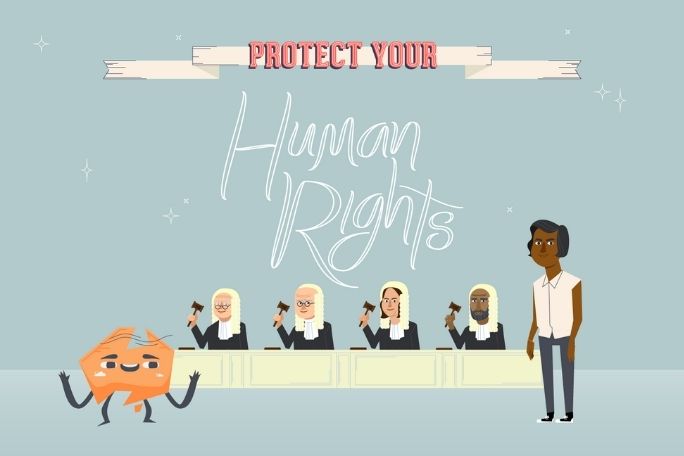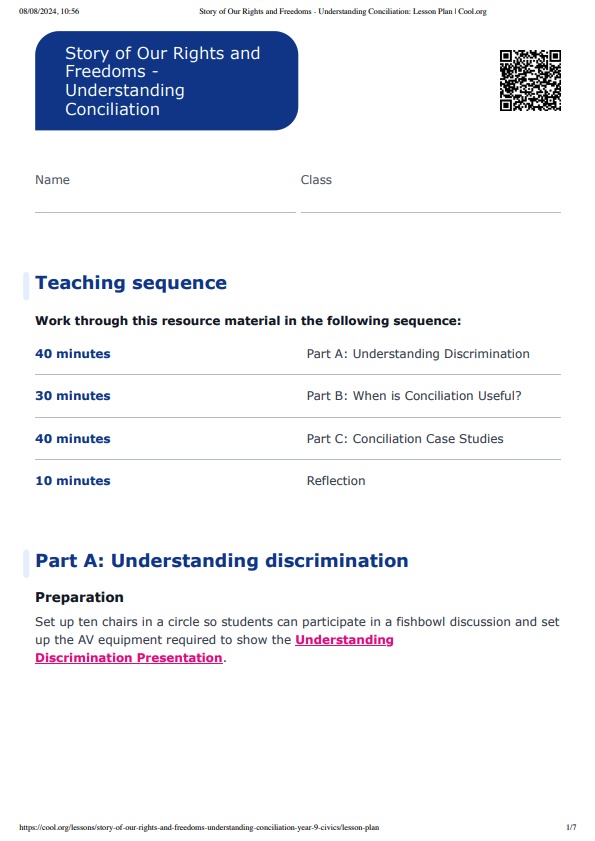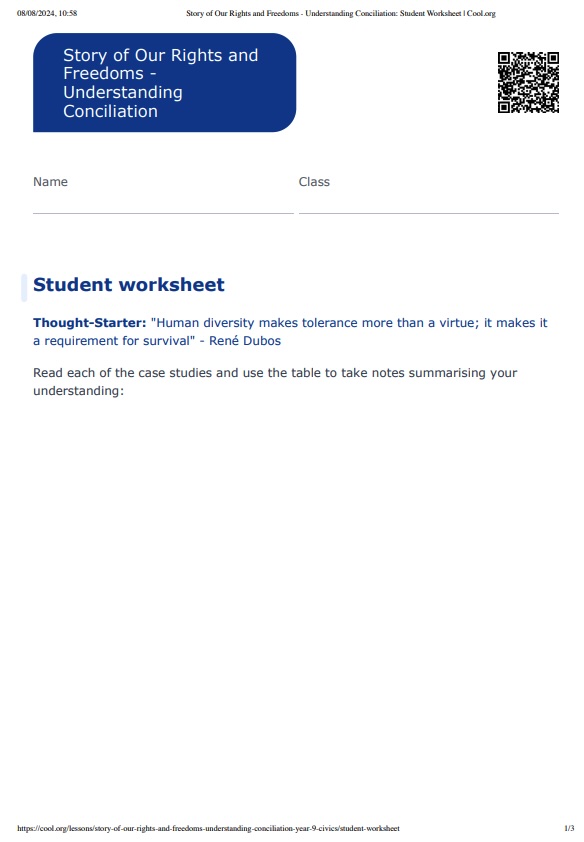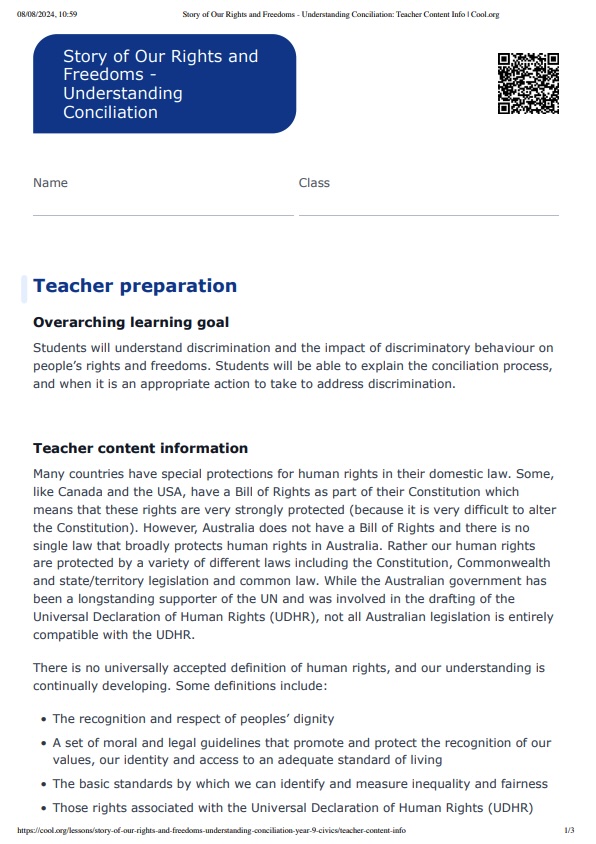Lesson summary
In this Finding Out lesson students will consider what discrimination is and how it can be addressed. They will read scenarios in which discrimination occurs and share their opinions in a group discussion. Students will read case studies of discrimination claims and consider points of view from both parties. Students will then explore the process of conciliation and when it can be effective.
Essential questions:
- What options are available for resolving disputes besides the court system?
- When is it appropriate to engage in conciliation?
- What is the link between conciliation and rights and freedoms?
Lesson guides and printables
Curriculum links
Select your curriculum from the options below.
Lesson details
Skills
This lesson is designed to build students’ competencies in the following skills:
- Communication
- Collaboration
- Ethical Understanding
- Empathy
Curriculum mapping
(V9) Australian curriculum content descriptions:
Year 9 Civics and Citizenship:
- The role of courts, judges, lawyers and juries in trials, and the rights of the accused and the rights of victims (AC9HC9K04)
- How and why individuals and groups, including community, religious and cultural groups, participate in and contribute to civic life in Australia and to global citizenship (AC9HC9K05)
- Create descriptions, explanations and arguments using civics and citizenship knowledge, concepts and terms that incorporate evidence (AC9HC9S05)
General capabilities: Literacy, Critical and Creative Thinking
Relevant parts of year 9 achievement standards: Students identify the key features and jurisdictions of Australia’s court system and explain the role and processes of courts and tribunals. They identify the reasons individuals and groups participate in and contribute to civic life nationally and globally. Students use civics and citizenship knowledge, concepts and terms to develop descriptions, explanations and evidence-based arguments.
Unit of work: Story of Our Rights and Freedoms – Exploring Human Rights and Justice
Time required: 120 mins.
Level of teacher scaffolding: High–read scenarios, facilitate student discussions.
Resources required
- Student Worksheet – one copy per student
- Device capable of audio/visual presentation to present a website to the class
- Understanding Discrimination Presentation
- Conciliation or not? handout (printed, one per pair)
- Conciliation Case Studies handout (one per student)
- Glue, butcher’s paper (optional)
Additional info
Throughout the Story of Our Rights and Freedoms lessons, students will consider Civics and Citizenship concepts through a human rights lens. They will critically assess the Australian system of government and the effect that it has on our rights and freedoms.
There is no universally accepted definition of human rights, and our understanding is continually developing. Some definitions include:
- The recognition and respect of peoples’ dignity
- A set of moral and legal guidelines that promote and protect the recognition of our values, our identity and access to an adequate standard of living
- The basic standards by which we can identify and measure inequality and fairness
- Those rights associated with the Universal Declaration of Human Rights (UDHR)
When we talk about human rights we usually refer to principles that have been agreed upon by countries throughout the world. These rights have been set down in international agreements and form part of international law. They can also be written into the domestic law of individual countries. Human rights cover virtually every area of human life and activity. These include:
- Civil and political rights, such as freedom of speech and freedom from torture
- Economic and social rights, such as the rights to health and education
- Individual rights, including the right to a fair trial
- Collective rights, or those rights that apply to groups of people, such as the right to a healthy environment or to live on one’s ancestral land.
The UDHR is an international document that recognises the basic rights and fundamental freedoms to which all human beings are entitled. It was adopted by the United Nations General Assembly on 10 December 1948 and marks a key milestone in the history of human rights. The Magna Carta, though limited in who it protected, was an important precursor to the UDHR.
Click here to watch a video about the Magna Carta.
You can view the entire text of the Universal Declaration of Human Rights, and the other core international human rights treaties, on the United Nation’s website or by downloading RightsApp (free from the iTunes App store).




Welcome back!
Don't have an account yet?
Log in with:
Create your free Cool.org account.
Many of our resources are free, with an option to upgrade to Cool+ for premium content.
Already have an account?
Sign up with:
By signing up you accept Cool.org's Terms and Conditions(Opens in new tab) and Privacy Policy(Opens in new tab).